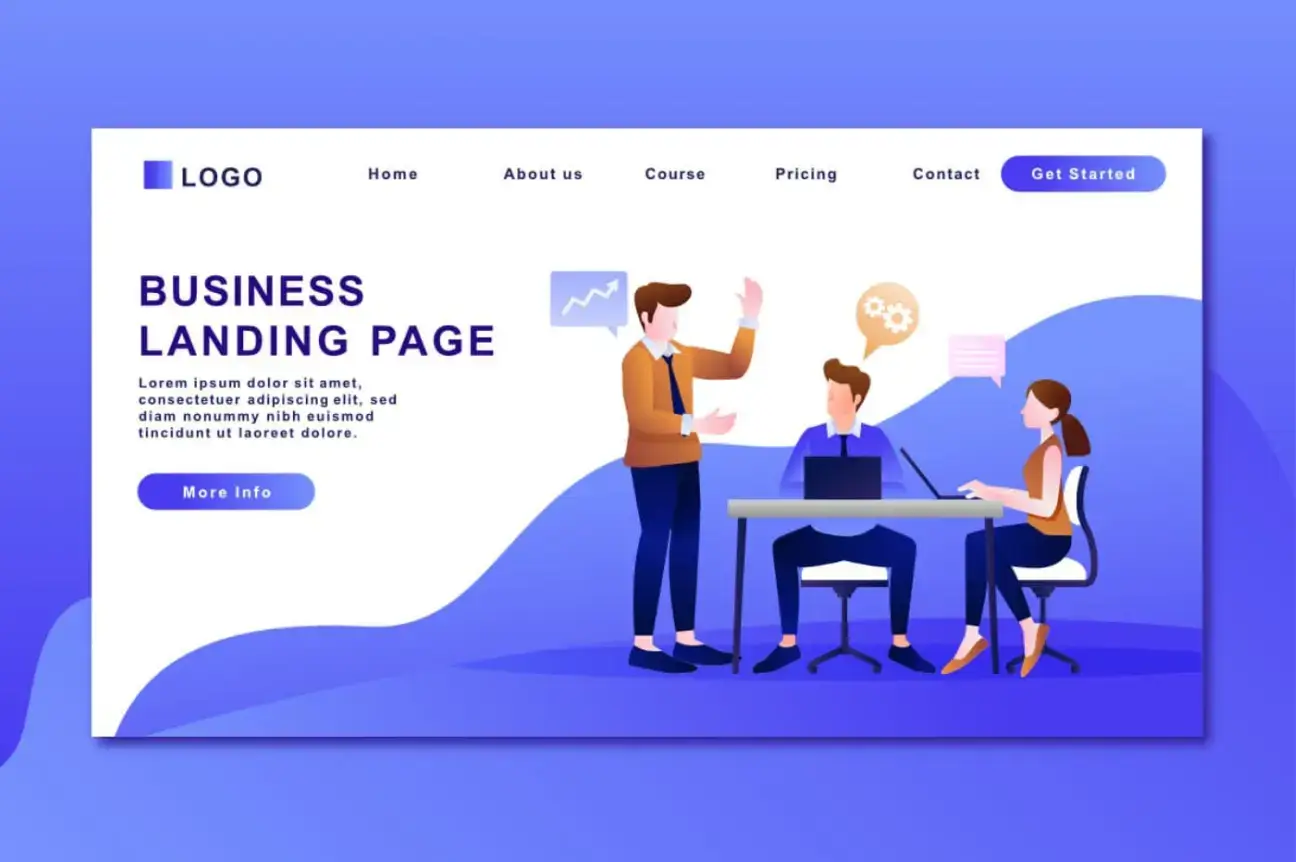Marketing is filled with metrics, but few are as crucial as conversion rate. If you’re running a business, managing an ad campaign, or optimizing a website, understanding conversion rates can mean the difference between success and failure.
* Updated on 03/10/2025
It’s not just about bringing in visitors or generating leads—it’s about turning those interactions into tangible results. Let’s break the concept down, shall we?
Breaking Down Conversion Rate

Source: Chisel
At its core, conversion rate is the percentage of users who take a desired action. This action can vary based on your business goals. For an e-commerce store, it could be completing a purchase.
For a SaaS company, it might be signing up for a free trial. A blog might consider a newsletter subscription a conversion. Whatever the goal, conversion rate helps measure how effectively your marketing efforts drive meaningful engagement.
To calculate it, use this simple formula:
Conversion Rate (%) = (Number of Conversions / Total Visitors) x 100
For example, if your website gets 10,000 visitors in a month and 500 of them make a purchase, your conversion rate is 5%.
Why Conversion Rate Matters
A high conversion rate means your marketing and sales funnels are working efficiently. However, conversion rates are not just meant to guide marketers.
For instance, if the CR is particularly high in France, it’s a sign that your software developers should localize the site for that region. Depending on how efficient the site is at converting, the entire team can pivot.
Also, remember that you’re not just attracting visitors—you’re getting them to act. This is important because traffic alone doesn’t pay the bills. If thousands of people visit your site but never sign up or buy, you’re missing out on revenue.
On the flip side, a low conversion rate signals potential problems. It could mean your messaging isn’t compelling enough, your website has usability issues, or your offer doesn’t resonate with your audience.
Diagnosing and improving conversion rates is one of the most effective ways to boost profitability without necessarily increasing traffic.
Factors That Impact Conversion Rate
A variety of elements influence conversion rate, some more than others. According to most frontend devs, marketing experts, and SEO veterans, it’s mostly down to:
- User experience (UX): If your site is slow, confusing, or difficult to navigate, users will leave before converting. Speed, design, and ease of use all affect how the user experiences the site as a whole.
- Call-to-action (CTA): A weak or unclear CTA can kill conversions. The wording, placement, and design of your CTA should make it obvious what users need to do next.
- Page copy and messaging: If your value proposition is unclear or the content doesn’t resonate with your audience, they won’t take action.
- Trust and credibility: Users won’t convert if they don’t trust your brand. Reviews, testimonials, secure payment options, and professional design all contribute to credibility.
- Targeting and traffic quality: Not all visitors are created equal. If your traffic comes from low-intent sources, conversions will suffer.
- Pricing and offers: If the price is too high or the offer isn’t compelling, potential customers might hesitate to commit.
How to Improve Your Conversion Rate
If your conversion rate isn’t where you want it to be, don’t panic. There are plenty of ways to optimize it, but all of them boil down to the fact you need to:
-
Optimize Your Landing Pages

Source: Brilliant Digital
Your landing pages should be designed with a singular goal in mind: getting users to take action. This means reducing distractions, using persuasive copy, and making your CTA stand out. Use eye-catching visuals, compelling headlines, and a clear, action-oriented CTA.
A/B testing different layouts, headlines, images, and CTA placements can help determine what works best. Additionally, minimizing form fields and removing unnecessary navigation elements can streamline the user journey and increase conversions.
-
Improve Site Speed and Mobile Experience
Slow websites kill conversions. Studies show that even a one-second delay can lead to a significant drop in conversions. Use tools like Google PageSpeed Insights and Lighthouse to identify bottlenecks.
To improve performance, optimize image sizes, enable browser caching, and use a content delivery network (CDN). Also, ensure your site is fully optimized for mobile users—many conversions happen on smartphones. Implement responsive design, simplify mobile navigation, and ensure buttons are large enough to be tapped easily.
-
Strengthen Your Value Proposition
Why should someone choose your product or service? If this isn’t immediately clear, your conversion rate will suffer. Clearly highlight your unique benefits and differentiators in a way that speaks to your audience’s needs and desires.
Use concise, benefit-driven messaging backed by data or real-world use cases. Adding explainer videos or interactive demos can also reinforce your value proposition and increase engagement.
-
Leverage Social Proof

Source: trustpulse
People trust other people more than they trust brands. Adding customer reviews, testimonials, case studies, and user-generated content can boost credibility and persuade hesitant buyers.
Prominently showcase social proof on your landing pages, product pages, and checkout pages. If possible, include influencer endorsements, or media mentions to further validate your brand’s authority.
-
Retarget and Nurture Leads
Not everyone converts on their first visit. Retargeting ads, email sequences, and follow-up campaigns can help bring people back and nudge them toward conversion.
Implement behavioral-based email automation to re-engage visitors who abandoned carts or browsed your site without taking action. Personalized offers, limited-time discounts, or informative content can help move prospects further down the funnel and increase your conversion rates.
Industry Benchmarks: What’s a Good Conversion Rate?
The ideal conversion rate varies depending on the industry, traffic source, and business model. Nevertheless, there is consensus around what a good conversion rate is. Here are some general benchmarks:
- E-commerce: 1% - 3%
- Lead generation: 2% - 5%
- B2B SaaS trials: 5% - 10%
- Landing pages: 10% - 20% (if well-optimized)
If your conversion rate is below industry averages, you might need to rethink your strategy. However, even if you’re within the benchmark, there’s always room for improvement.
The Role of Conversion Rate Optimization (CRO)
Conversion rate optimization (CRO) is the practice of continuously testing and improving your website, offers, and messaging to maximize conversions. It involves techniques like:
- A/B testing different headlines, images, and CTAs
- Conducting user behavior analysis through heatmaps and session recordings
- Using exit-intent popups to capture leads before they leave
- Simplifying forms and checkout processes
- Enhancing personalization by showing different messages based on user behavior
CRO isn’t about tricking people into converting—the goal is actually to remove friction and make the path to conversion as seamless as possible.
FAQ
1. What is a conversion rate in marketing?
Conversion rate is the percentage of visitors who take a desired action, such as making a purchase, signing up for a newsletter, or filling out a contact form. It measures how effectively your marketing efforts turn traffic into results.
2. How do you calculate conversion rate?
Use the formula:
Conversion Rate (%) = (Number of Conversions / Total Visitors) × 100
For example, if 500 out of 10,000 visitors complete a purchase, your conversion rate is 5%.
3. What factors affect conversion rates?
User experience, page speed, CTA clarity, trust signals (reviews, testimonials), audience targeting, and pricing all influence how well visitors convert.
4. What is a good conversion rate?
It depends on the industry, but general benchmarks are:
- E-commerce: 1% - 3%
- Lead generation: 2% - 5%
- B2B SaaS trials: 5% - 10%
- Optimized landing pages: 10% - 20%
5. How can I improve my conversion rate?
Optimize landing pages, improve site speed, refine your messaging, add social proof, A/B test CTAs, simplify forms, and use retargeting to nurture leads.
Final Thoughts
Conversion rate is one of the most important metrics in marketing. It determines how effectively you turn visitors into customers, subscribers, or leads.
While there’s no magic number that guarantees success, understanding what affects conversion rates and how to improve them can significantly impact your business.
The key is to always test, analyze, and refine. Small changes can lead to big improvements over time.
Whether you tweak your CTA, improve site speed, or craft better offers, every adjustment brings you closer to higher conversions—and, ultimately, more success.


